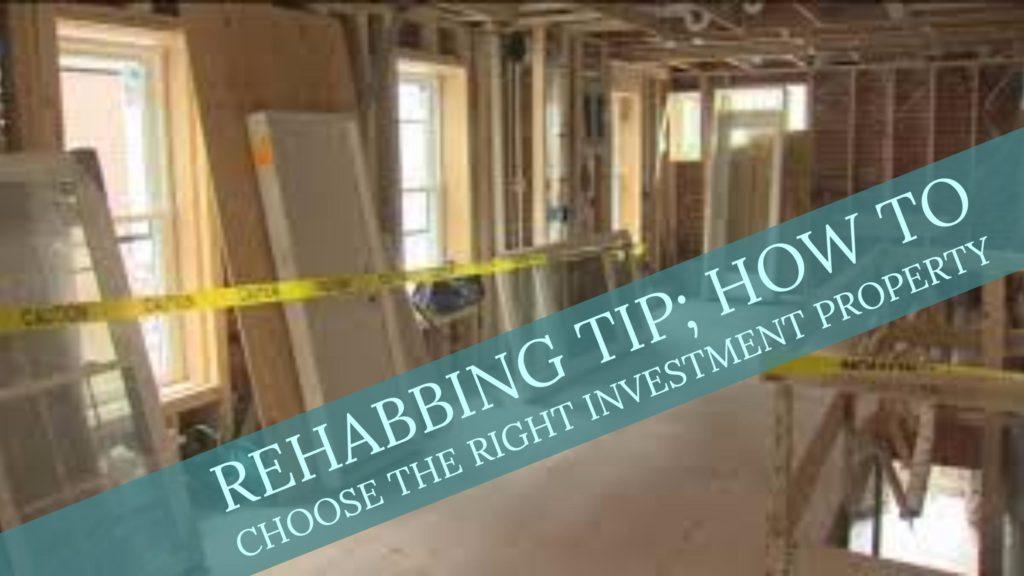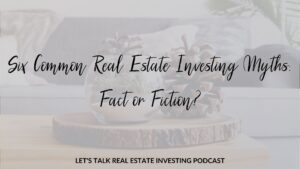
It's important to know how to choose the right investment property to rehab when you are first starting out. If you stray too far from the median priced, typical “bread and butter” home you could be in for some shocking surprises. The simple truth of the matter is most of us make some bad decisions on the first couple of houses we buy. They may not be fatal mistakes, but they are mistakes none the less.
Today I want to tell you about my first flip and also give you some tips on how to choose the right investment property.
My First Flip
My first flip was in a solid older neighborhood but it was a 2 bedroom home. I knew that a 2 bedroom house was less desirable than a 3 bedroom, but I counted on the neighborhood to fix that problem. This house was in an area where there was a solid mix of 2 and 3 bedroom houses most of which were built around 1950-1960. It needed a lot of work. You could easily say it was a “junker” if you only looked at the interior. It was a cute house on the exterior.
I got a good deal, I did a good job on my repair estimates and I found a contractor in my local REIA group.
This contractor also gave me some invaluable advice on my first flip:
“Remember that you're not going to live there”.
That was advice that they would say to me more than once during my rehab. At the end of the day I got it done right on budget, and it sold fairly quickly.
However, there was one thing I hadn't counted on. I had no idea that real estate agents were going to hit me up for all the closing costs for this home (rookie mistake). I had overlooked the fact that this house would almost certainly be sold to a first time home buyer, and at that particular time it was customary for the seller to pay the buyer's closing costs for first time buyers. I also let the agent “bully” me into an upgrade they wanted.
The house was priced right, but it was at the top of the market. They gave me a full priced offer contingent on me paying the closing costs and doing that one extra thing. At the end of the day, I made money on the house not nearly enough.
I learned several lessons:
- I needed to buy property even cheaper than I thought
- Know your market. If paying closing costs for 1st time home buyers is common in your area, you had better figure that in your costs
- Don't allow yourself to be bullied by agents
- You're not going to live in this house so do your rehab accordingly
- Keep a close watch on your expenses
The takeaway – I wish someone had given me some tips on how to choose the right investment property before my first flip.
Buying the Wrong Type of Property
It's easy to fall in love with that big old historic home you have driven by for years. However, that is not the property a brand new investor should buy for one of their first flips. It's even debatable if you should flip this type of property at all. The costs of rehabbing these types of properties and the sheer volume of “unknowns” can wreck any budget. They always cost more to complete, take longer than expected and can be difficult to sell. Not everyone wants to live in the city.
The nature of the flip is to buy the property, rehab it on a tight schedule, then sell it fast. None of these things happen on schedule except for the first thing. Buying the property is usually pretty easy. However the next thing that will typically happen is once your contractor pulls the first permit is that you will get a visit from the historic preservation folks in your area. That's what happened to me.
They had pictures and drawings of what the home originally looked like, and they wanted me to add back those features (which weren't in the budget). They couldn't force you to add back elements like covers for the porches and architectural elements, but they could sure try to “convince” you.
You should know that there are a lot of rules when you renovate a home in a historic area. Do your homework before you buy, and be sure to build in a hefty “fudge fund” for all those things you didn't anticipate.
How to Choose the Right Investment Property
This is really pretty simple. You want to buy property that is around the median price level for your area. (It can also be slightly above or below this price range). It should located in the places homeowners want to live. Most folks call these bread and butter homes. In my area those are usually 3 bedroom brick homes. If the house has a basement that's a big plus. So in my area, if I were to tell someone how to choose the right investment property it might look something like this:
- 3 or more bedrooms
- 1 1/2 or 2 bathrooms
- A functional layout
- Basement
- Central AC
- Garage
- Not located on a busy street
- In an area composed primarily of homeowners
Now if I were to make that same list for landlords, I know several of them that would change that list a bit. They don't really want houses with basements and garages. They say tenants just leave all their unwanted furniture and junk in garages and basements. They don't want to have to clean out those areas.
Landlords in my area also don't want these big old houses either. In most cases they have original windows that are costly to upgrade, and they are difficult to heat so tenants don't want to live in them. If your plan is to buy rental property, stay within the guidelines above. Those types of houses are easy to sell and easy to rent.
I hope you have enjoyed these tips on how to choose the right investment property. Let me know if you have any tips to add to the list. Happy investing!
If you’re not already subscribed to the “Inner Circle”, be sure to do that today so you don’t miss any of the business building tips I have coming your way. I want this year to be your best year ever! And if you enjoyed this article, please share it.








